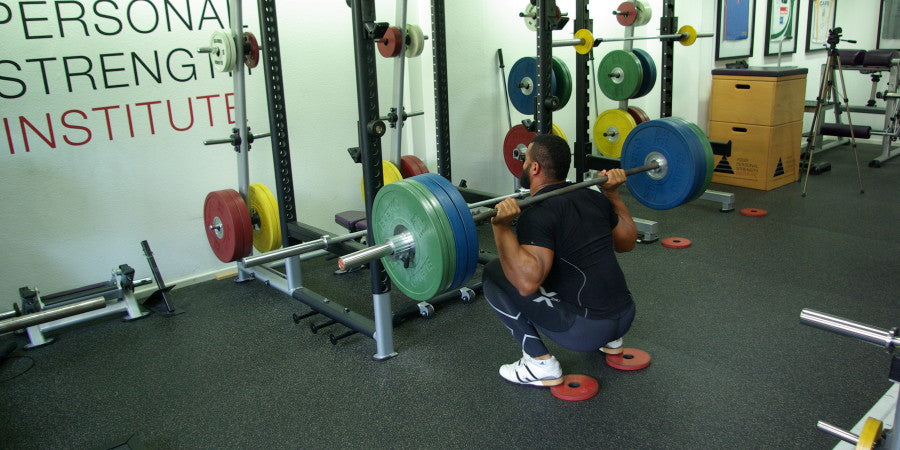Training on vibration plates is one of the most widespread trends of the last 10 years. I am regularly asked what I think of it
If training on a vibration plate was successful, there would be a vibration plate in the YPSI. However, we do not have a vibration plate in the YPSI.
The detailed answer is:
1. Lack of resistance
The main factor that determines the training effect is the tension on the muscles during training. Tension is generated by resistance. This resistance is low in bodyweight exercises. For this reason, external resistance such as barbells and dumbbells is essential for rapid training progress. Tension - in volume and magnitude (intensity) - is the key variable influencing neural adaptation, hypertrophy, maximal and explosive strength gain, and fat loss. Conclusion: Without tension there is no maximum training effect.
2. Unstabilizable instability
One of the basics of stability training is the ability to stabilize on unstable ground. The University of Frankfurt/Main around Prof. Dr. Dietmar Schmidtbleicher has conducted excellent studies on this subject, which include: have shown that the frequency with which commercially available vibration plates vibrate is far too fast for the human nervous system. This means that the nervous system and thus the muscles are not able to react to the vibration stimulus and stabilize the unstable underground. The training effect is therefore void. The University of Frankfurt/Main has also published a study from professional football which showed that the probability of sustaining the same injury repeatedly triples if the rehabilitation training was carried out on an unstable surface.
3. Stability relevant to everyday life
Stability in everyday life and in sports is crucial to prevent injuries and maximize training performance. The higher the stability, the higher the power output - you can't fire a cannon from a canoe - and the less wear and tear on fascia and muscles.
Basically, stability is divided into 2 categories, stability at low loads and stability at high loads. Standing on one leg on a vibration plate trains stability with a low load, your body weight. When you start sprinting, slow down from a full run or just go jogging (load per leg per step 4-6 times your body weight), high to very high forces/loads act on the body. Standing on one leg and being able to stabilize the knee has nothing to do with stabilizing the knee under high physical loads, sprinting, running, braking and changing direction. It's like when Porsche tests the GT3's brakes at walking speed and then concludes how they perform when the car has to slow down from 180km/h to 50km/h in 3s before the corner on the racetrack.
Conclusion: Stability with high loads must be trained with high loads. Classic strength training with barbells and dumbbells and progressive resistance is the most efficient method for this.
4. Lack of potential for progression
In training, you grow as the load increases. The basis of successful strength training is progressive resistance. Barbells and dumbbells are excellent training tools to provide progressive resistance. At YPSI I have weight plates from 0.5kg to 25kg, an ideal tool to ensure that even the smallest steps are possible. Example: If you only add 1 kg to the barbell per week, you will lift 52 kg more at the end of the year. A remarkable achievement.
The first lore of progressive resistance strength training dates back to ancient times, from the most successful Olympic athlete of the time, Milo of Croton
“Milon picked up a newly born calf and carried it around the family farm several times. Although it was very difficult for him at first, he persevered and repeated these 'rounds' every day. Over time the calf grew and Milon grew with him so that after a year of progressive loading he was strong enough to carry a full grown heifer around his parents' estate.”
Conclusion: Training on vibration plates is a trend - and like most trends, a complete waste of time.
Solution: Success-oriented strength training with progressive resistance is the much more efficient solution for maximum progress when training stability, muscle growth, maximum and explosive strength and fat loss than training on vibration plates.
Anecdote on the side: When I opened my studio 5 years ago, I had my customer whose company had a cooperation with the largest and best-known manufacturer of vibration plates. He offered that I could move the vibrating plate he has in his office to my new studio as he didn't really have a use for it. I was happy about the gesture, but declined it with thanks. I could use the space for more useful equipment. Like the three power racks for squats and two leg curl machines that we have at YPSI. And which are excellent for optimizing knee stability.
Picture: YPSI athlete Richard Adjei, Vice Olympic Champion and World Champion in 2-man bobsleigh doing LH squats with raised heels in the YPSI in the 2015 offseason.

